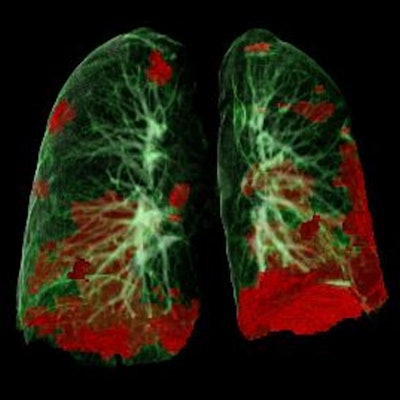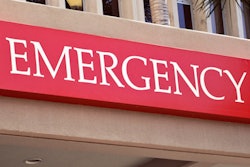
VIENNA - Is chest CT indicated for children with suspected COVID-19? Perhaps not, according to a panel discussion held on 14 July at ECR 2022.
Dr. Ola Kvist of the Karolinska Institute in Solna, Sweden, and Dr. Thomas Semple of Royal Brompton Hospital in London discussed the pros and cons of using chest CT in children to diagnose suspected coronavirus disease.
On the pro side, Kvist noted CT's sensitivity over chest CT in diagnosing COVID-19, citing research that showed normal x-ray results in 33% of patients who did have the illness but fairly COVID-19-specific findings on CT, such as ground glass opacities, septal thickening, crazy paving, and septal thickening. Kvist emphasized that CT can help clinicians identify and track thrombotic complications. Kvist listed CT's benefits for diagnosing COVID-19:
- The exam dose can be lowered to be similar to the dose for an x-ray, which is of particular benefit in pediatric patients.
- CT has higher sensitivity and specificity than x-ray for diagnosing COVID-19.
- CT can be used to rule out pulmonary embolism.
In his con argument, Semple reminded session attendees that the potential harms of radiation exposure for children undergoing CT are real. In fact, a 2018 study published in the Journal of the National Cancer Institute found a 1.5-fold increase in cancer incidence in children exposed to CT radiation, and a 2013 study linked pediatric CT to higher cancer rates.
Semple stressed that the "background prevalence" of COVID-19 among a population will dictate the likelihood of the specificity of CT findings. He cited one study that included 20 children (ages 1 day old to 14 years old) and showed that 20% had no COVID-19 findings on CT, and 40% were discovered to have other infections. Another study that Semple cited included 100 children and showed only 9% progression of the disease on follow-up CT. Both studies imply that the exam isn't indicated for either diagnosing or tracking COVID-19 in pediatric patients.
"We can't use CT as a COVID-19 screening tool in children," Semple said. "It's too insensitive, too dependent on high pretest probability, and disease progression is rare. Children aren't just little adults -- they have very different and rapidly changing pulmonary environments. And, yes, low-dose CT is a thing, but there's no replacement for having the right test at the right dose at the right time."
A poll taken among session attendees after Kvist's and Semple's remarks found that 80% were against using CT in children with suspected COVID-19.
In any case, when it comes to using chest CT in children to diagnose suspected COVID-19, radiologists must consider the special needs of pediatric patients.
"We have to image gently," Kvist concluded.



















